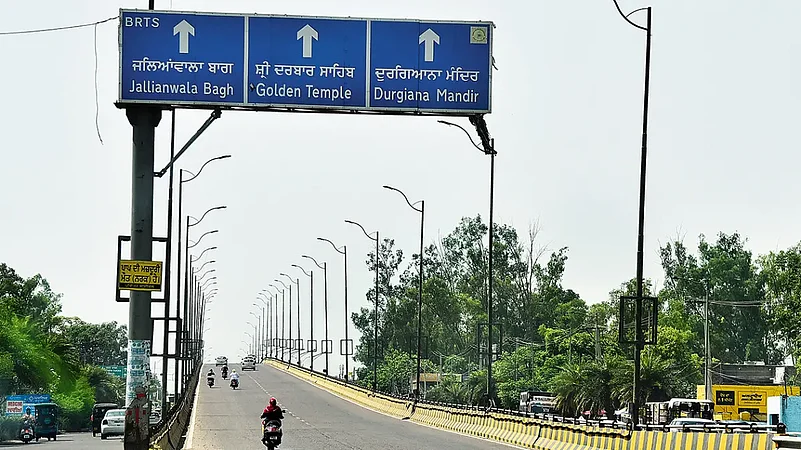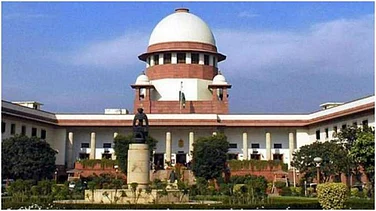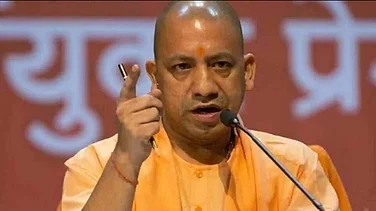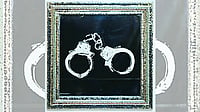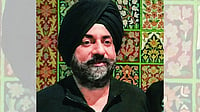Surjit Patar, a noted Punjabi poet, narrated an anecdote at his Ludhiana residence in February. While discussing how a poet’s relationship with his surroundings influences his work, Patar recalled a girl child of migrant Bihari farmhands learning Uda, Aida, Eedi (letters of Gurumukhi-Punjabi script) under a sheesham tree at a government school in Punjab. “Kinna gehra saath hai akhran tha te rizak da (How intense is the relationship between letters and subsistence),” he said before he dwelt on a contradiction, “Those native people who have economic means, their children are learning A,B,C,D (in private schools)…They have their own aspirations.” Back in 2018 at a public event, Patar, the Punjab Arts Council’s chairperson, accused private schools of inculcating an “inferiority complex” among students regarding their mother tongue. The noted poet who also wrote a poem, Mar Rahi Hai Meri Ma Bhasha (My mother tongue is dying), had stated, “We want our children to learn English well but there is no need to make them forget their ma boli (mother tongue).”
ALSO READ: Let A Language Contend
Of course, Punjabi cannot promise as many job opportunities as English does. But it’s a strange dichotomy that Gurmukhi-Punjabi has almost wiped out other languages from the state’s public space in recent years. Does this demonstrate an assertion of a regional identity shaped by the state’s partition, reorganisation, insurgency and its aftermath? The resurgence of Gurmukhi-Punjabi, as per Punjab watchers, began in the mid-1990s as an assertion of Punjabi identity after the armed insurgency ended in the state. Before the partition of Punjab in 1947, Punjabi was written in Gurmukhi and Shahmukhi scripts. The undivided Punjab produced modern poets like Sahir Ludhianvi, Naqsh Lyallpuri and Anand Bakshi, who rose to prominence at the national level after India became independent in 1947.
Following the Partition of the subcontinent that triggered migration of the majority of the Muslim population from the region to Pakistan in 1947 and later the reorganisation of Punjab on linguistic basis in 1966, the Shahmukhi or Urdu language silently slipped into the oblivion. Notably, several Punjabi Sufi poets like Baba Farid, Bulleh Shah, Shah Hussain, Sultan Bahu and Waris Shah among others, besides the Sikh Gurus, have extensively used Urdu or Persian in their poetry upholding universal human values. Needless to mention that Punjabi is replete with words from Persian and Arabic languages, besides dialects that have also enriched Hindi and Urdu vocabularies. Even though Punjabi continues to be spoken by a vast majority of the population in the continguous areas of Pakistan, it has been overshadowed by the country’s official language, Urdu.
While the Congress-led Punjab government mandated all signage in Gurmukhi Punjabi in February 2020, it introduced two important laws to ensure Punjabi language in Gurmukhi script as the medium of instruction for all administrative work, besides making it a compulsory subject in all schools up to Class 10.Aarish Chhabra, a journalist-academician who has dealt with these issues in his book on the socio-cultural aspects of Chandigarh, The Big Small Town, views the rise of Punjabi sub-nationalism as a reaction to the “Hindi-Hindutva” push at the national level.

Chhabra underscores that Punjabi sub-nationalism is rooted not just in language but also in the Sikh ethos central to Indian post-Partition Punjab. “Its expression is as much through religious symbolism as it is through the Punjabi language. The rise of the Sikh/Punjabi diaspora in the political sphere of their respective countries has lent the community a lot more confidence,” he tells Outlook. “At home in India, though, the push by Hindutva forces to subsume Sikh identity has caused some insecurity. So, on one side there’s renewed confidence from the success abroad, on the other hand, ironically there are new insecurities in India now. When this imported confidence meets Made-in-India insecurities, particularly on social media, then the Sikh/Punjabi individual becomes all the more protective of his subnational identity.”
In Punjab, activists like Lakha Sidhana have been campaigning for prominence for Punjabi and Punjabiyat. The gangster-turned-politician had unsuccessfully contested assembly election from Maur constituency in Bathinda district on the same poll plank. “This action is due to this mix of confidence and insecurity, historical heft and present panic. The 2021 farmer movement had all these feelings manifested through words and symbols,” Chhabra remarks.
Incidentally, reacting to a recent Punjab Assembly resolution for transfer of Chandigarh to Punjab, Haryana chief minister Manohar Lal Khattar earlier in April had asked the state to first transfer its Hindi-speaking areas to Haryana. In recent years, there has been widespread protests and criticism over the move by the central government to push for Hindi as main language in India. In September 2018, protest demonstrations were held on Panjab University campus against Hindi circulars that were viewed as an attempt to impose Hindi hegemony. Similarly, a row erupted over the celebration of Hindi Diwas at the state language department’s Patiala headquarters in September 2019. The Akal Takht issued a statement in which it not just flayed alleged disrespect of Punjabi language at the event but also warned against forcible imposition of Hindi in Punjab. M. Rajivlochan, who teaches history in Panjab University, says, “The impression one gets while moving around in Punjab is that all signs and billboards are in Punjabi. However, that does not imply in any way that other languages have been wiped out.”

The professor—who has authored a biography of Partap Singh Kairon, a former Congress chief minister—attributed the anti-Hindi protests at Panjab University to assumed “unfair imposition” of the language. “I have documented the conflict in my book explaining that the first crisis that Kairon faced was an assertion of Hindi by those who themselves did not know how to write or read Hindi. Kairon had to put them down very roughly. The Times of India had to tell them to send their press notes in Hindi and not in Urdu,” he quips. Describing Punjabis as the most itinerant people in India who are quick to learn languages, he says, “In Punjab, we can easily find people who speak and understand Marathi, Gujarati, Bengali, Tamil, Telugu, Kannada, Polish, Russian, Serbo-Croatian, French, German, Spanish, Portuguese, Italian, and of course English.”
Interestingly, there are some noted Punjabi authors and poets whose parents had come to Punjab for employment and then settled here. Satpal Bhikhi is one such Punjabi poet whose parents belonged to Mainpuri in Uttar Pradesh. This school teacher has won the prestigious Sahitya Akademi award for children’s literature in Punjabi. Pradeep Bose is another Punjabi poet, who has a Bengali origin and is currently based in Rajasthan. He has recently published an anthology of his Punjabi poems, Sheher De Khilaaf (Against the City).
Last year, the state government announced the Punjabi and Other Languages Education (Amendment) Act and Punjab State Language (Amendment) Act. While lauding the previous state government’s efforts towards promotion of Punjabi, Rajivlochan stresses, “Empowering Punjabi does not mean disempowering or destroying any other language. It is not in Punjabi culture to grow by pulling others down.”
Interestingly, Punjab observers reveal that the Bharatiya Jan Sangh (BJS)—considered a predecessor of the Bharatiya Janata Party (BJP), and Hindu organisations like Arya Samaj—had campaigned among Hindus of Punjab to register Hindi as their mother tongue in the Census of 1961. They feared that a separate linguistic identity in the Sikh-majority state could ultimately lead to separatism and secessionism. In the 1960s, observers say, there used to be two sections of students in the school in which the medium of education for Hindus and Sikhs used to be Hindi and Punjabi respectively.
The BJP, however, seems to have reconciled to the fact that Punjabi is the mother tongue of those living within the geographical boundaries of the present-day Punjab. On growing domination of Gurmukhi and disappearance of other languages from the public space, Col. Jaibans Singh (retd.), state BJP spokesperson says, “I have not noticed anything unusual in Punjab. In almost all Indian states, signboards are written in local language and English, except for the Hindi-speaking belt. South Indian states like Tamil Nadu, Kerala, etc., as also some in the Northeast do not understand any language other than the local dialect.”
(This appeared in the print edition as "The Mighty Ma Boli")
ALSO READ






